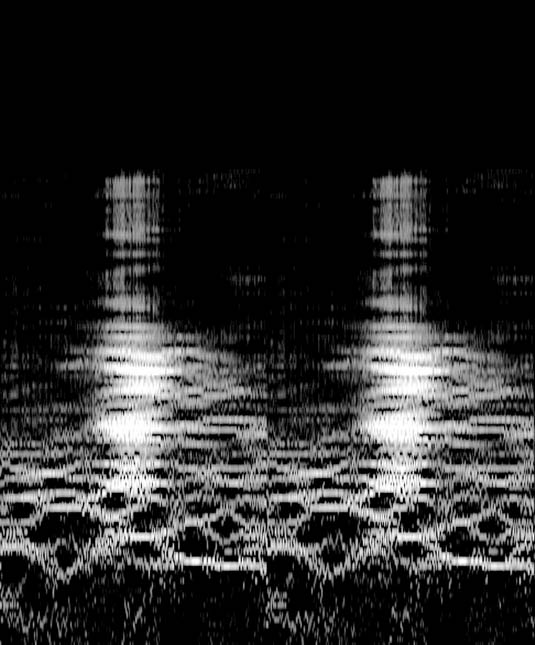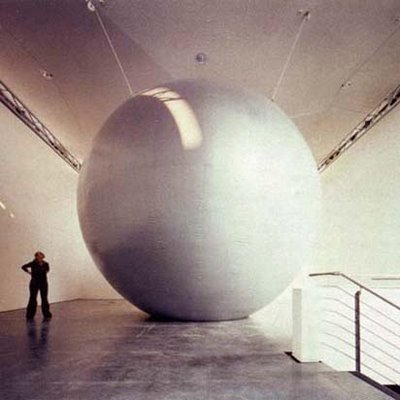 [Image: A ghostlike “sonographic image” taken from part of Mark Bain’s sound file].
[Image: A ghostlike “sonographic image” taken from part of Mark Bain’s sound file].
On the 10th anniversary of the 9/11 attacks, sound artist Mark Bain has released the full audio file of the sound of the Twin Towers collapsing, a melancholic howl terrestrially amplified by the region’s geology. You can listen to it here:
What you’re hearing is the “audification of the seismological data record,” as Bain explains it, “which occurred in the area of New York State, New Jersey, and New England during the collapse of the World Trade Center buildings on September eleventh, 2001.”
The data streams were acquired from Columbia University’s Geological survey lab, which run a network of earth monitoring stations in the area; with the closest being 34 km away from the epicenter of the event. A process of data conversion and signal translation was used to make the normally inaudible seismic waveforms both audible and to play back in real-time as the event unfolded. No other processing or effects were added to the tracks. The registration includes four events, two impacts and the two collapses along with the inbetween sounds of the drone of the earth. The heaviest impact of the collapse registered 2.4 on the Richter scale, a signal which traveled throughout the earth.
The piece is not intended as a memorial, Bain adds, but as “a bell-like alarm denoting histories in the making.”


